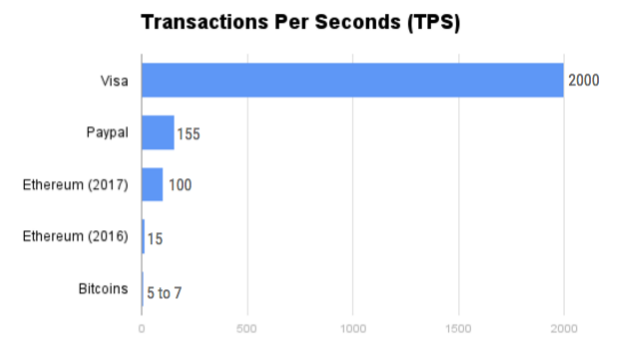What Is IOTA and How Does It Work?
Big shout out to SIRAJ RAVAL for making this article possible. I mostly used github, IOTA's personal website, and Siraj's channel to make this article. Make sure to visit his channel here for a wealth of info on emerging technology
https://www.youtube.com/channel/UCWN3xxRkmTPmbKwht9FuE5A
What's IOTA?
Well, IOTA uses a distributed ledger system rather similar to Bitcoin's blockchain. However, IOTA intends to solve a lot of the problems associated with Bitcoin's blockchain in general . To really appreciate what IOTA brings to the table, I think we should first look at the key issues that can be found with blockchains.
- Scalability
- Fees
- Required Computing Power
Scalability
There are obviously many many many many many ......many solutions to scalability. Last time I checked though, it can take 10 minutes or more to confirm a Bitcoin transaction . To put that into perspective, imagine buying something from the gas station and having to wait ten minutes after you paid, just to make sure you had enough money for the clerk. There are literally thousands of unconfirmed transactions on the bitcoin blockchain.
https://blockchain.info/unconfirmed-transactions
That's maybe 5 to 7 TSP (Transactions Per Second). Compared to Visa, that's basically nothing.

Fees
Bitcoin transaction fees have already risen well above a dollar. That may not seem like a big deal, but for a network that was intended for micro-payments yea that's a lot of money. There have been a lot of proposed solutions to this. Lightning networks, sidechains, and treechains among others.Required Computing Power
You need a lot of computational "horsepower" to maintain the blockchain. A lot of you probably already know that. Not only that but, these humongous mining pools have created somewhat of a centralization in what was to be a decentralized network.

https://www.bitcoinmining.com/
Three mining pools make up more than 50% of the networks power. 3 MINING POOLS ALONE!
OK Now Let's Talk About IOTA
There are a couple of big differences that separate IOTA from a regular ole' blockchain.
IOTA Uses A Block DAG(Directed Acyclic Graph)
Wait wait what's a DAG?
It's essentially a collection of nodes where no node is a descendant of itself. This prevents cycles from being created. That's the basic idea at least, and also where the acyclic (no cycle) part comes from. A DAG is nothing new. You've used them hundreds probably even thousands of times. A file system on your computer, for example, could be thought of as a DAG . There's a folder within a folder within a folder. No folder can be a descendant of itself. The blockchain is basically a sequence of chains that's secured by the proof of work algorithm (in Bitcoin's case). IOTA refers to its DAG as Tangle. Tangle is different from the traditional blockchain in that it's able to achieve high transaction throughput by parallelizing validation(it can validate transactions more efficiently). The more Tangle grows and the more participants make transactions, the more secure and quicker the network will become(more nodes in the network = faster). On the other hand, the more nodes there are in the Bitcoin blockchain, the slower the transactions are approved. In other words, it's super scalable.
Consensus
So, if you want to be a miner for IOTA, I have some bad news for you.
In the Bitcoin blockchain, miners are competing against each other to mine the next block the fastest. Whoever is first to mine it, gets the reward.
Contrast this with IOTA, where every participant in the network who is making a transaction also participates in the consensus.
I'm going to write another article that explains how consensus is achieved in IOTA, if you're interested. If you found this helpful or want me to write more about IOTA hit that like button for me and I'll see you next time.